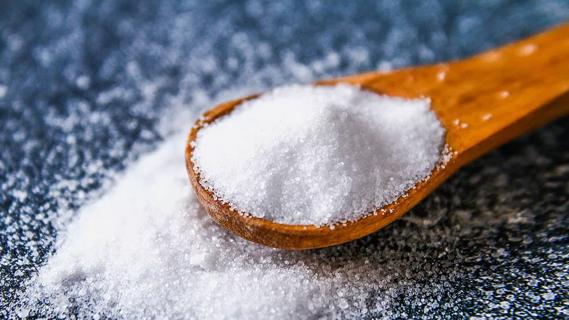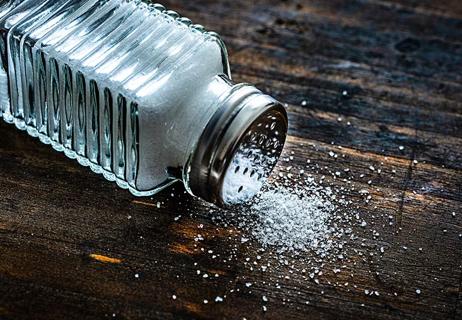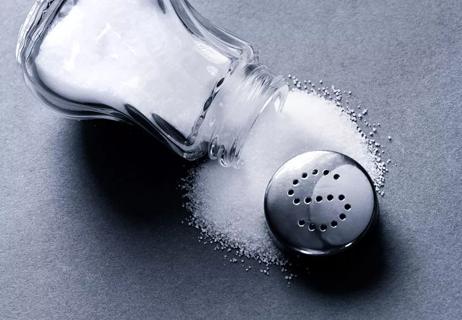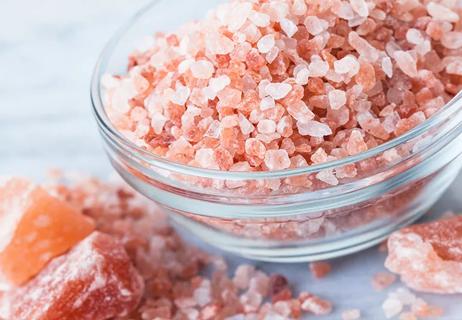Keep the flavor and cut the sodium by using herbs, garlic, ginger, citrus and more in your cooking

From our favorite pretzels to our daily sandwiches, salt is in almost everything we eat. So, how do you know if you’re getting too much?
Advertisement
Cleveland Clinic is a non-profit academic medical center. Advertising on our site helps support our mission. We do not endorse non-Cleveland Clinic products or services. Policy
The American Heart Association recommends no more than 1,500 milligrams (mg) of sodium per day for most adults. People with certain medical conditions should consume even less.
But how do you do this when you’re cooking your favorite meals or browsing the grocery aisle? Hypertension specialist George Thomas, MD, breaks down what foods have the most sodium, which foods have the least — and how to season your food without, or with less, salt.
Using too much salt in cooking can have negative effects on health, so reducing salt intake or using it sparingly can offer several health benefits:
“Studies show that cutting down on sodium in your diet can lower blood pressure — reducing your risk of stroke, heart failure and other health problems,” says Dr. Thomas.
Advertisement
If you want to cut the salt out of your cooking routine, there are plenty of other ways to add flavor to your food.
“Try using natural substitutes like lemon, ginger, curry, dried herbs (such as bay leaves, basil and rosemary), onion, garlic and dry mustard,” suggests Dr. Thomas.
You might also use salt substitutes, but check with your doctor first. ”Salt substitutes are lower-sodium salts that replace sodium chloride with potassium chloride for taste. While this is a good option for some, the swap in ingredients can cause risk for other issues, so be sure to talk to your healthcare provider before trying these products,” he advises.
Using other seasonings may take some getting used to, but it’s possible over time to train your taste buds to enjoy their flavor more and crave salt less. And depending on your palette, you may find some of these alternatives pair even better with your go-to dishes.
Here are some ways to season your food without salt.
The spices aisle at your local grocery store has you covered with plenty of other options. There’s a wide variety of herbs and spices that can add robust flavors to your favorite dishes. Some popular ones include:
You can even create your own herb blends or sauces by mixing various dried herbs and spices. These can be used as rubs or marinades or added directly to dishes.
Another way to add taste to your food is utilizing the tart flavor of citrus. Lemon, lime and orange zest or juice can add a pinch of tanginess when your dish needs something extra. A little goes a long way; squeeze a bit of citrus into marinades, salad dressings, sauces and even desserts. Plus, you’ll get a healthy boost of vitamin C at the same time.
If you’ve looked up any recipe online, it often starts with cutting up garlic or onions for flavor. And for good reason — these vegetables are known for providing a savory and rich flavor to dishes. Sauté or roast them for various recipes or utilize them in sauces and dressings.
Plus, these aromatic vegetables have plenty of other health benefits. Garlic is known for boosting your immune system and keeping your heart strong, while onions can strengthen bones and fight bacteria.
If you’ve ever sipped on a ginger ale or ginger beer, you’ll recognize the sweet and slightly spicy taste of ginger. Fresh or ground ginger can add the right amount of savoriness and a slightly sweet kick to stir-fries, soups, marinades and more. Not only that, but this humble root can boost your health in other ways by providing antioxidants, vitamins and even relief from nausea.
Advertisement
If you’re looking for a little more heat, adding chopped fresh or dried chili peppers can provide a spicy element to your dishes. These vibrant peppers also have anti-inflammatory properties to boost your health. Just be aware of other side effects that spicy foods may cause stomach cramping, heartburn and nausea.
You might wonder if sea salt, kosher salt or Pink Himalayan salts are any better alternatives. While these salts are less processed, they generally carry about the same amount of sodium.
“When it comes down to it, sea salt doesn’t offer any health advantages over regular table salt,” notes Dr. Thomas.
It turns out that many foods we consume have much more than just a pinch of salt. And while it does help to avoid adding salt to your food at the table, a major part of the sodium in U.S. diets — more than 70% — comes from processed and packaged foods. These foods can be high in sodium even if they don’t taste salty.
Processed foods include:
Checking the nutritional label is the only way to know how much sodium is in your food. If you buy packaged or processed foods, choose foods that are labeled sodium-free or very low sodium.
Advertisement
“Remember that the amount of sodium listed on the ingredient label references a particular serving size,” points out Dr. Thomas. “If you eat more than the listed serving size, you’ll consume more sodium.”
When making reservations for your favorite restaurant, it’s best to plan ahead. Sometimes, the restaurant will add their menu’s nutritional values on their website. Take a look before you go. This can help you make a decision based on how much sodium is in your meal of choice.
The American Heart Association has a list of six popular foods with high sodium content dubbed the “Salty Six”:
So, are there any foods with no sodium? Short answer: not really. Most whole, unprocessed foods naturally contain some amount of sodium, as sodium is an essential mineral. But the sodium content in these foods is usually minimal compared to the high levels often found in processed and packaged foods.
Advertisement
Here are some examples of common foods that are naturally low in sodium:
If the list of foods seems familiar, it’s because they’re part of a popular diet known for its many health benefits. If you have high blood pressure, the DASH diet (Dietary Approaches to Stop Hypertension) is a low-sodium, low-fat approach to food.
The diet calls for four to five servings of fruit, four to five servings of vegetables and two to three servings of low-fat dairy. It’s also rich in whole grains, fish, poultry, beans, seeds and nuts, while also limiting sugar and red meats.
Work with a healthcare provider or dietitian to figure out a meal plan for you with the DASH diet.
If you’re looking to lower your sodium intake, there are plenty of solutions. And none of them have to come at the expense of your love for food and cooking! Plus, you can choose according to your individual tastes and dietary needs. The flavorful, healthy options are practically endless.
Learn more about our editorial process.
Advertisement

Too much sodium can cause high blood pressure and increase your risk of heart disease

Eating too much salt can put extra pressure on your blood vessels and heart

Excess salt and sodium consumption is a worldwide health concern

Two key electrolytes — sodium and chloride — are the building blocks of salt

Unproven and unregulated, they aren’t the best choice to boost performance

Too much salt in your diet? Here’s how to cut back

How to make your meals less salty and more flavorful

Plus 5 tips for lowering your salt intake

Start having sex about 72 hours before ovulation, then at least every other day during your fertile window

Attachment theory suggests that your earliest relationships shape connections throughout your life

It isn’t a recognized mental health disorder, but research shows that problematic social media use can negatively affect your mental health, self-esteem and sleep